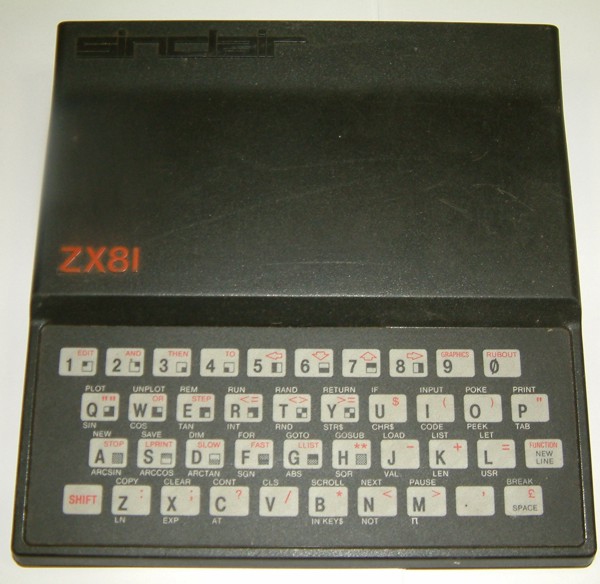
SINCLAIR ZX81 COMPUTER

ZX81 KEYBOARD SIDE.
The keyboard is still formed by an underprinted plastic, but this one is made of non-reflective material. Even with this slight improvement it's quite horrible to use, that's why a lot of additional keyboards appeared quickly on the market. Some of the keys have up to 5 functions, right in the Sinclair tradition, accessed through the "GRAPHICS", "SHIFT" and "FUNCTION" keys.

ZX81 INSIDE.
The ZX80 could not handle floating point numbers or cassette files, but the ZX-81 can. The ZX-80 had 4k ROM : the ZX-81 has 8K ROM with 30 additional functions and some instructions to drive the printer. Thanks to a higher level of integrations (the total number of chips in the basic system is 4, against the ZX80's 21), the ZX-81 cost £30 less than the ZX-80. The plastic case is also different. Whereas the ZX-80 looked cheap in it lightweight white case, the ZX-81 is beautifully designed in its black ABS plastic case.
The ZX-81 can be operated in two modes, SLOW and FAST. The FAST mode which was the only
mode available on the ZX-80, only refreshes the display when the system has finished
computing, resulting in a painful screen flicker ! It is a useful mode when you need to do
a lot of calculation without the need to see what's going on all the time on the screen.
The SLOW mode, which is indeed quite slooooowwww, behaves like all the other computers do,
refreshing the screen all the time.
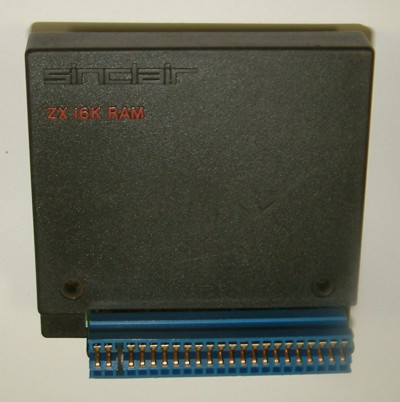
ZX81 16K RAM MODULE.
The ZX81 contains only four main chips : the ROM, Z80A CPU, 1K RAM and the Ferranti
custom-made chip ! It is as simple as that. The machine was assembled by Timex Corporation
in their Scottish plant.
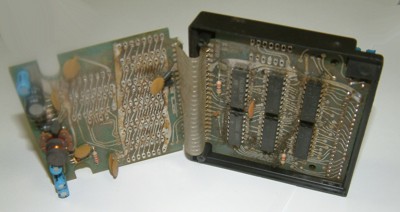
ZX81 16K RAM OPEN.
This computer was a very great success in Europe in the beginning of the 80's. It was very cheap and a lot of people who now are working on modern PCs or Macs, made their first move on a ZX 81 even though its performance was actually poor!
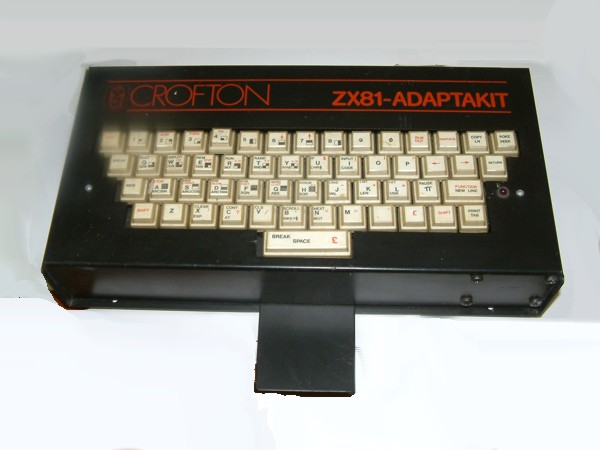
ZX81 ADAPTKIT From CROFTON, SIMPLY TAKE OUT
ZX81 BOARD, CONNECT ALL. CABLES AND
YOU GET MECHANICAL KEYBOARD, MOUCH PLEASENT FOR WORK.
A very great range of peripherals were developed for this computer, among them : 3.5" floppy disk units, keyboards, high resolution graphic cards, RS232 or Centronics interfaces, RAM expansions, etc... In fact, it was possible to make a pretty good computer from the ZX 81.
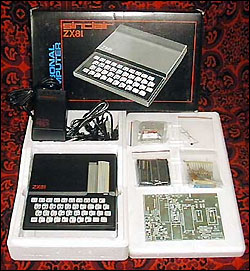
All about Sinclair computer you can fined here http://www.nvg.ntnu.no/sinclair/index.html